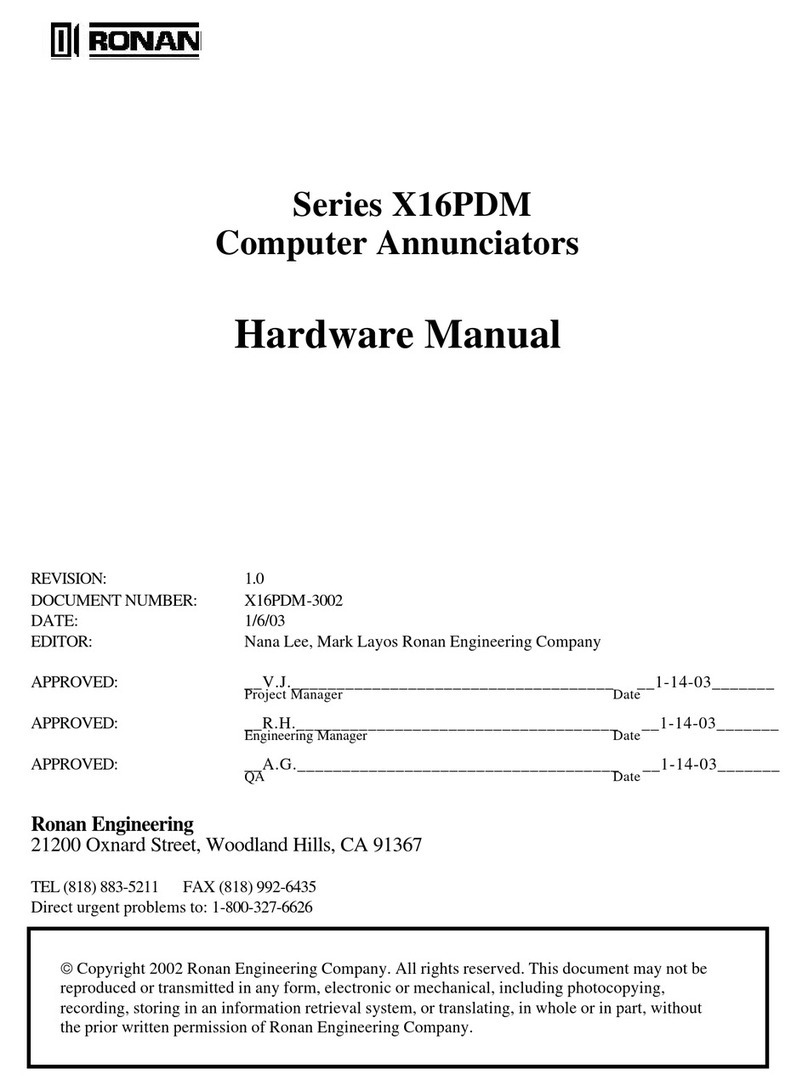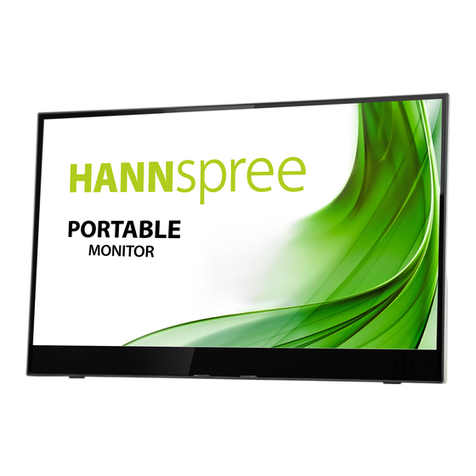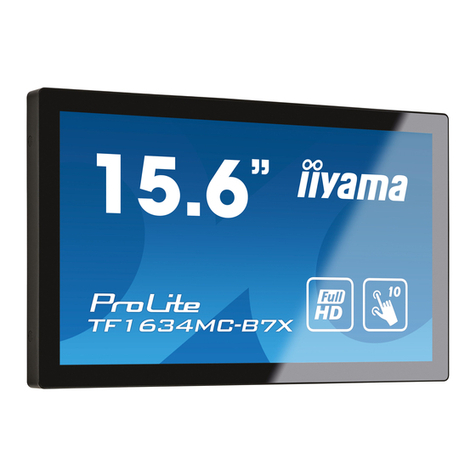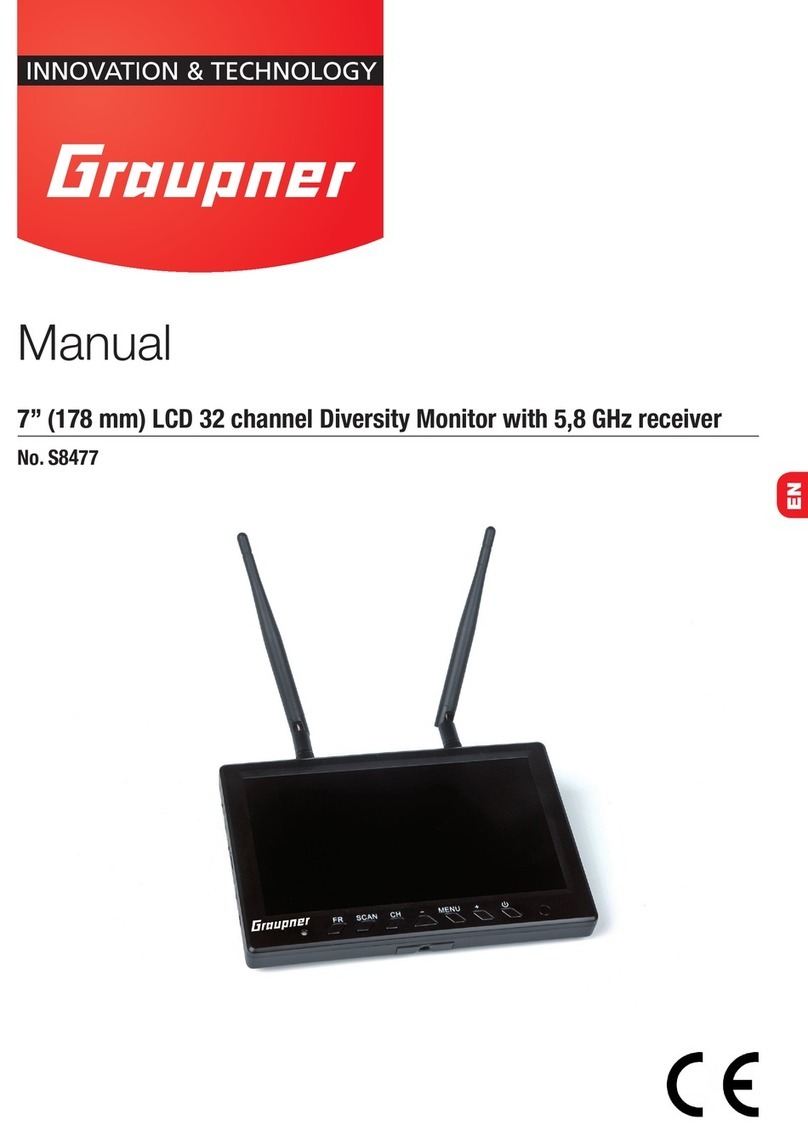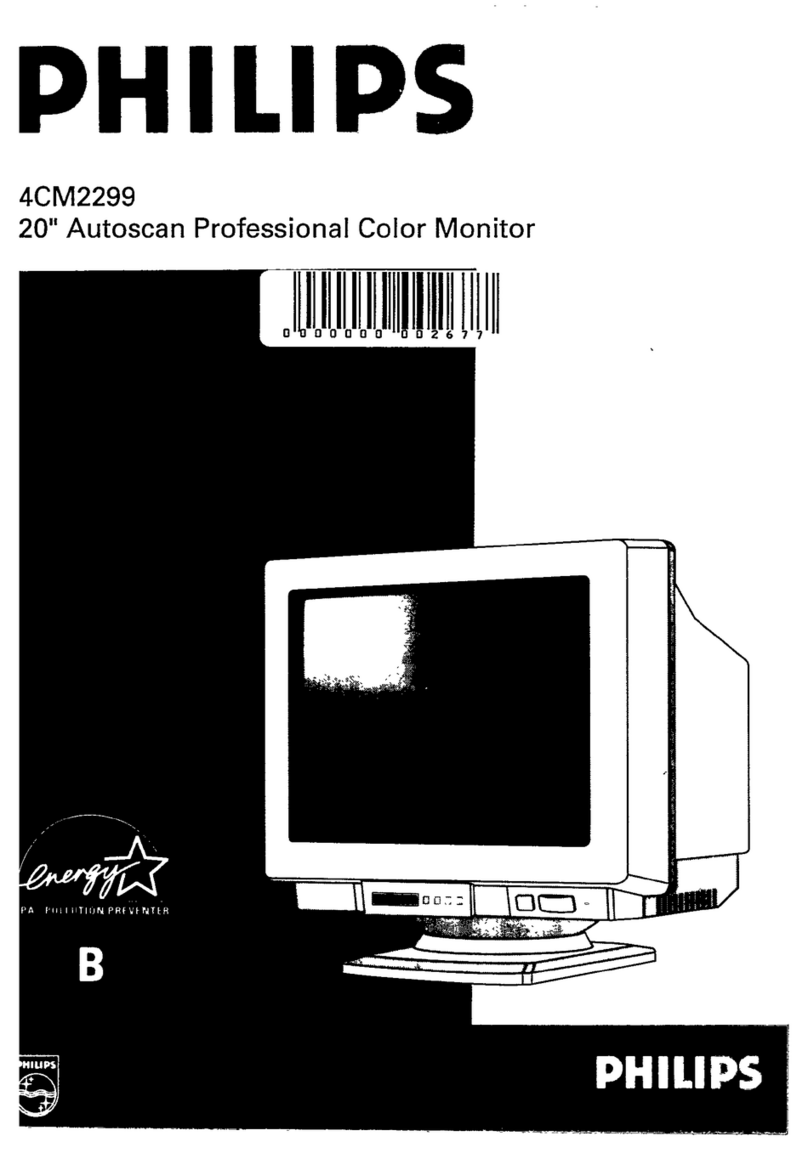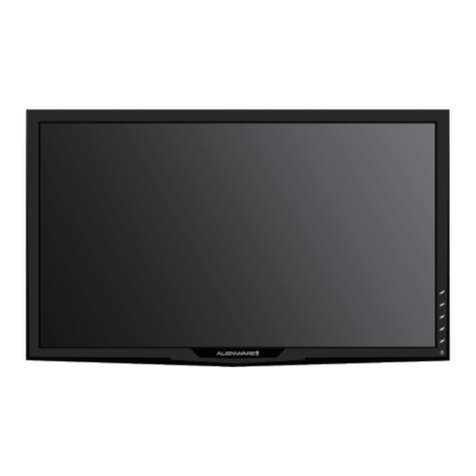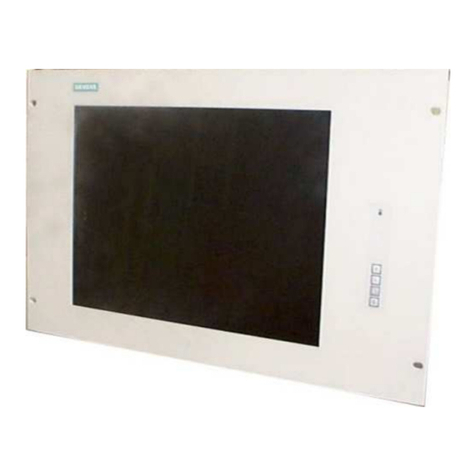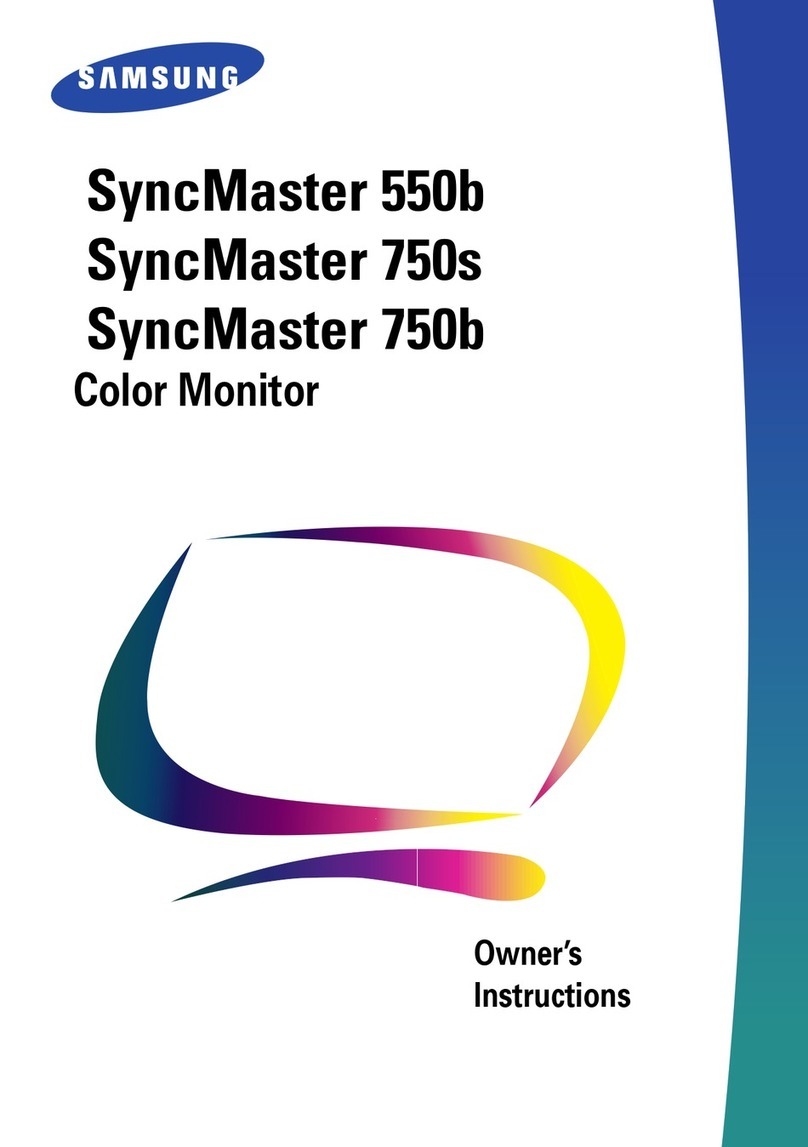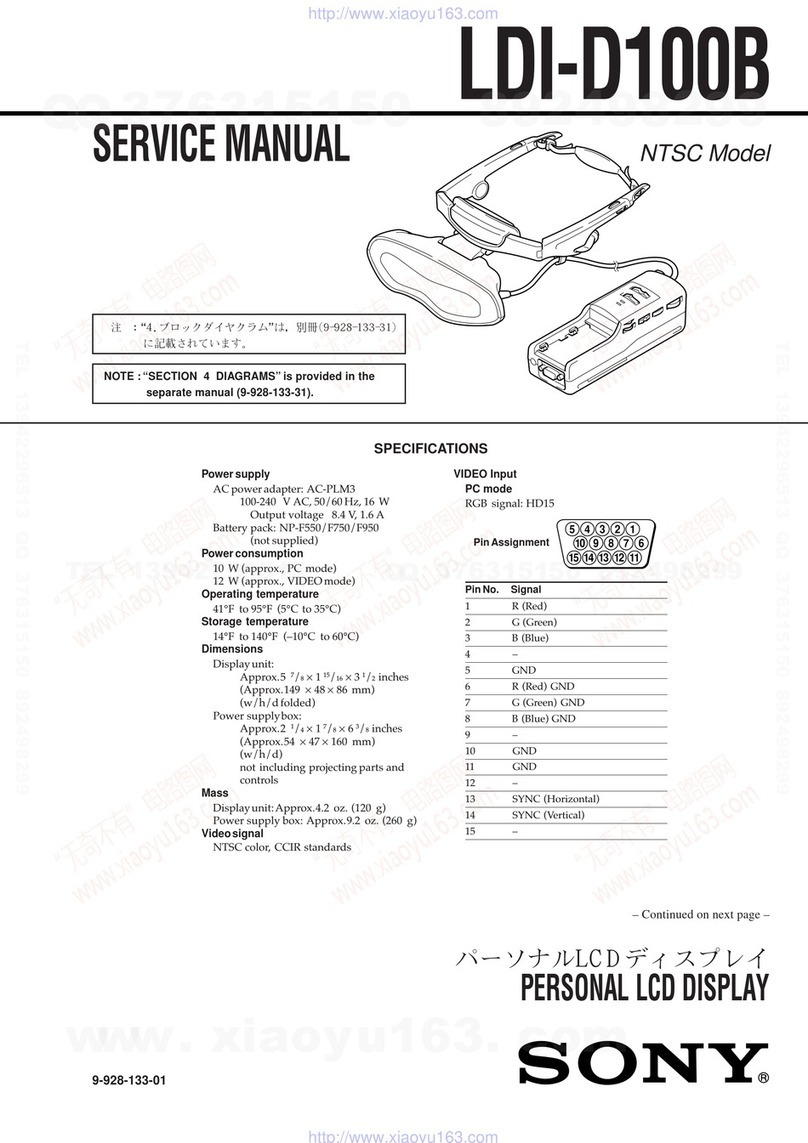DK-Audio MSD100 User manual

[User’s Manual]
www.dk-audio.com
MSD100
MSD100AES/SA
MSD100T/SA
MASTER STEREO DISPLAY

MSD100 Series - User’s Manual
Copyright © 1995, 1997, 2002, DK-Audio, Herlev
All rights reserved. No part of this publication may be
reproduced or distributed in any form, or by any means,
without prior written consent from DK-Audio A/S,
Denmark.
Trademarks
Analog Devices is a registered trademark of
Analog Devices, Inc. USA
Crystal is a registered trademark of
Crystal Semiconductor Corp., USA
Note: This manual covers all MSD100 Series models.
The main text refers to the MSD100 but applies to all
models. Special notes, subsections and tables are pro-
vided to describe operational features that are unique to
specific models.

MSD100 Series - User’s Manual
CONTENTS
1. Introduction
1.1 Using This Manual . . . . . . . . . . . . . . . . . . . . . 2
1.2 Notation Conventions . . . . . . . . . . . . . . . . . . 3
1.3 Related Documentation . . . . . . . . . . . . . . . . . 4
1.4 If You Need Help . . . . . . . . . . . . . . . . . . . . . . 4
2. Overview
2.1 Audio Metering . . . . . . . . . . . . . . . . . . . . . . . 5
2.2 MSD100 Applications . . . . . . . . . . . . . . . . . . 5
2.3 Physical Overview . . . . . . . . . . . . . . . . . . . . . 6
2.4 Audio Inputs . . . . . . . . . . . . . . . . . . . . . . . . . 6
2.5 Power Supply . . . . . . . . . . . . . . . . . . . . . . . . 6
2.6 Model Comparison Summary . . . . . . . . . . . . 8
3. Installation
3.1 Mounting . . . . . . . . . . . . . . . . . . . . . . . . . . . . 9
3.1.1. Mounting for Horizontal and Vertical
Adjustment . . . . . . . . . . . . . . . . . . . . 9
3.1.2 Mounting for Horizontal
Adjustment Only . . . . . . . . . . . . . . . . . 9
3.2 Audio Connections . . . . . . . . . . . . . . . . . . . 10
3.3 Power Connections . . . . . . . . . . . . . . . . . . . 11
4. Operation
4.1 Main Display and Control Keys . . . . . . . . . . 12
4.1.1 Initial Display at Power Up . . . . . . . . . 13
4.1.2 Function Keys . . . . . . . . . . . . . . . . . . 13
4.1.3 Additional Information Displayed on
Digital Models . . . . . . . . . . . . . . . . . . 13
4.2 Phase Correlation Meter . . . . . . . . . . . . . . . 14
4.3 Audio Vector Oscilloscope . . . . . . . . . . . . . . 14
4.4 Peak Programme Meter (PPM) . . . . . . . . . . 15
4.4.1 International PPM Scales Supported . 15
4.5 Level Meters . . . . . . . . . . . . . . . . . . . . . . . . 16
4.6 Adjusting Input Gain (20 dB) . . . . . . . . . . . . 16
4.7 Using the Utilities Menu . . . . . . . . . . . . . . . . 16
4.7.1 Adjusting Brightness . . . . . . . . . . . . . . 17
4.7.2 Adjusting Viewing Angle (Contrast) . . . 17
4.7.3 Selecting Inverted Display . . . . . . . . . 18

MSD100 Series - User’s Manual
4.8 Selecting PPM Options . . . . . . . . . . . . . . . . 18
4.8.1 Selecting Preferred PPM Scale . . . . . . 18
4.8.2 Selecting the PPM Reference Level . . 19
4.8.3 Using the LED Overload Indicators . . . 19
4.8.4 Using the PPM Peak Hold Function . . 19
4.8.5 Using the PPM FAST Mode . . . . . . . . 20
4.9 Changing Default Settings . . . . . . . . . . . . . . 20
4.10 Bitstream Status Display . . . . . . . . . . . . . . 21
4.10.1 AES/EBU Decoding Mode . . . . . . . . 21
4.10.2 Consumer Decoding Mode . . . . . . . . 23
4.10.3 Displaying Channel Information . . . . 23
4.11 Spectrum Analysers . . . . . . . . . . . . . . . . . . 23
4.11.1 FFT Spectrum Analyser . . . . . . . . . . 23
4.11.2 1/3-Octave Spectrum Analyser . . . . . 24
Appendix A. Specifications
A.1 Power Supply . . . . . . . . . . . . . . . . . . . . . . . 25
A.2 Cabinet Dimensions . . . . . . . . . . . . . . . . . . 25
A.3 Level Meter . . . . . . . . . . . . . . . . . . . . . . . . 25
A.4 Phase Correlation Meter . . . . . . . . . . . . . . . 26
A.5 Audio Vector Oscilloscope . . . . . . . . . . . . . 26
A.6 LCD Display . . . . . . . . . . . . . . . . . . . . . . . . 26
Glossary
Terms, Abbreviations, Acronyms . . . . . . . . . . . . 27
Product Registration Form
Registration Card . . . . . . . . . . . . . . . . . . . . . . . 30

MSD100 Series - User’s Manual
List of Tables
Table 2-1 MSD Rear Panel Connections . . . . . . . 6
Table 2-2 MSD Comparison Summary . . . . . . . . . 8
Table 3-1 MSD Series Audio Connections . . . . . 10
Table 3-2 MSD Supply Voltage Specifications . . 11
Table 4-1 Ideal Stereo and Mono Signals . . . . . . 14
Table 4-2 Data Information for AES/EBU Mode . 22
List of Figures
Figure 1-1 MSD Master Stereo Display . . . . . . . . 1
Figure 4-1 MSD Main Display . . . . . . . . . . . . . . 12
Figure 4-2 MSD100AES/SA w/Sampling
Frequency . . . . . . . . . . . . . . . . . . . . 13
Figure 4-3 MSD100 Displays for Signal
Conditions . . . . . . . . . . . . . . . . . . . . 15
Figure 4-4 Available PPM Scales . . . . . . . . . . . . 16
Figure 4-5 Set Brightness/ INV Menu . . . . . . . . . 17
Figure 4-6 Set Viewing Angle Menu . . . . . . . . . . 17
Figure 4-7 Set Set up Utility Menu . . . . . . . . . . 21
Figure 4-8 FFT Spectrum Analyser . . . . . . . . . . 24


MSD100 Series - User’s Manual
1. INTRODUCTION
This section provides a description of the MSD100
Series, lists related documentation and notation conven-
tions, and provides product support contact information.
The DK-Audio MSD100 Master Stereo Display Series
models are universally recognised professional audio
metering system for broadcast and studio applications.
The MSD100 Series supplements the human ear by pro-
viding a visual representation of audio level, phase, stereo
imaging and more. The entry-level MSD100 is shown in
Figure 1-1.
The MSD Series models covered in this manual are:
• MSD100
• MSD100AES/SA
• MSD100T/SA
Figure 1-1. MSD100 Master Stereo Display
1
Note: This manual covers all MSD100 Series
models listed above. The main text refers to
the MSD100 but applies to all models.
Special notes are provided to describe ope-
rational features that are unique to specific
models.
☞

MSD100 Series - User’s Manual
The MSD100 Series models deliver monitoring capabili-
ties beyond traditional instruments such as bar graphs,
LEDs and oscilloscopes.
All MSD100 Series units provide the following basic func-
tions:
• Phase Meter
• Audio Vector Oscilloscope
• Level Meter with selectable PPM/VU scales
• Selectable reference level
• LED overload Indicator
• Peak Hold
The MSD100T/SA adds the following features:
• Spectrum Analyser
• Transformer balanced audio inputs with XLRs
The MSD100AES/SA adds the following features:
• Spectrum Analyser
• Digital Data Readout
1.1 Using this Manual
This manual contains information and instructions neces-
sary to install, configure and operate the MSD100,
MSD100AES/SA and MSD100T/SA. It provides step-by-
step instructions you must perform to install and operate
your MSD100 Series model successfully. This manual
contains the following information:
Section 1 Introduction. Includes a brief description
of the MSD100 Series, lists related
documentation, provides product support
contact information.
Section 2 Overview. Describes the MSD100
functions, hardware components, physical
enclosure, and connectors.
Section 3 Installation. Provides instructions on how
to install the unit and connect audio and
power cables.
2

MSD100 Series - User’s Manual
Section 4 Set-up and Operation. Provides instruc-
tions on how to operate the MSD and use
the main display, control keys, phase corre-
lation meter, audio vector oscilloscope, and
peak programme meter. It describes how to
interpret displayed data, adjust PPM peak
hold meters, input gain, utilities, brightness,
and viewing angle.
Section 5 Digital AES/EBU Versions. Describes the
operation of the bitstream status display on
the digital audio MSD100AES/SA model.
Section 6 Spectrum Analyser Versions. Describes
the operation of the Spectrum Analyser of
the MSD100T/SA and MSD100AES/SA
models.
Appendix A Specifications. Provides the technical and
physical specifications for the MSD unit.
Glossary Glossary. Provides full spelling of acronyms
and abbreviations and the definitions of
special industry terms used in this manual.
Product Registration Card. This page can be used
Registration if the registration card is missing. Either the
form or the card can be mailed or faxed to
DK-Audio.
1.2 Notation Conventions
Before you begin working with the MSD100, familiarise
yourself with the notation conventions used in this manu-
al.
Convention/Symbol Meaning/Example
☞
Used together with italic type to
point out important information
and notes.
Important cautions and safety-
related information, such as
“Never apply power while the
housing is removed”.
3
!
Caution

MSD100 Series - User’s Manual
Boldface Type Keys you must press, such as
[LEFT], [UTIL], [CAL],
[DEFAULT] and [EXIT] keys.
Italic type Emphasises operational
differences of specific models,
such as This function is not
available on the MSD100AES/SA.
1.3 Related Documentation
The Audio Metering book provides additional information
about related technologies, and is available from your
local dealer.
• Audio Metering, Eddy Bøgh Brixen,
Broadcast Publishing & DK-Audio A/S, Denmark 2001
1.4 If You Need Help
If you need assistance while working with your MSD100
Series product, please contact your local dealer or
tech.support at DK-Audio:
Telephone +45 44 85 02 55
Fax +45 44 85 02 50
Mail registration DK-Audio A/S, Marielundvej 37D
DK-2730 Herlev – Denmark
E-mail [email protected]
Web address www.dk-audio.com
You can access the following Technical Support informa-
tion from our web site:
• Product Specifications
• Software downloads (Not available for MSD100-series)
• User’s Manuals
• FAQ (Frequently Asked Questions)
• Direct contacts
4

5MSD100 Series - User’s Manual
2. Overview
This section provides an overview of MSD100 audio
metering functions, applications, a physical description
and a summary comparison table.
2.1 Audio Metering
The DK-Audio MSD100 Master Stereo Display Series pro-
vides producers, sound engineers and technicians with
an objective visual representation of audio characteristics.
By supplementing the human ear with meters and scopes
based on international standard measurement scales, the
risk of over-reliance on subjective criteria is minimised.
All models in the Master Stereo Display Series ranging
from the simple monochrome version to the multi-channel
colour version provide the following basic functions:
FUNCTION DISPLAY
Phase meter Average phase relationship between two
audio signals
Level meter Level of signal with peak and overload
protection with several selectable
international scales and reference levels
Audio vector Picture of audio signal indicating mono or
oscilloscope stereo patterns
2.2 MSD100 Applications
The small physical size and versatility of the Master
Stereo Display makes it ideally suited for:
• Master metering of any mixing console
• Studio and broadcast facilities
• OB-Vans
• Hard disc recording and editing systems
• Home studios
The MSD100 Series provides serious audio professionals
with these essential features backed by a 2-year warran-
ty:
• Phasemeter
• Audio vector oscilloscope
• Level meter with 6 selectable PPM/VU scales
• Individually selectable input reference levels with an
additional 20dB of input gain (100, 100T/SA)
• LED overload indicator

6MSD100 Series - User’s Manual
• Peak hold
• Simultaneous display of stereo information and
audio levels
• Softkey selectable PPM characteristics
• Support for most international standards
• Digital processing, eliminating scale errors
• Storage of all user defined parameters in NV-RAM
• Long life CCT backlight (15.000 hours)
• Digital Data Readout (100AES/SA)
• FFT and 1/3 octave spectrum analyser (100T/SA and
100AES/SA)
2.3 Physical Overview
Each MSD100 model is housed in a cabinet measuring
179 mm wide x 129 mm high (without bracket) x 39 mm
deep. The display area is 120 x 92 mm.
2.4 Audio Inputs
The rear-panel audio connection and signal types vary by
model as described in Table 2-1.
2.5 Power Supply
The 2.1 mm power input connector on the rear of the
MSD100 cabinet accepts 12-30V DC.
The power supply is based on both switch-mode and
linear regulation principles and accepts both AC and DC
inputs.
Model Connector Type Signal type
MSD100 RCA phono plugs Unbalanced
stereo
MSD100AES/SA Female XLR Balanced
sockets AES/EBU
(digital)
MSD100T/SA Female XLR Balanced
sockets
TABLE 2-1. MSD100 SERIES REAR PANEL
CONNECTIONS

7MSD100 Series - User’s Manual
Recommended supply voltages are:
• 12 to 30V DC
• 12 to 20V AC, 50Hz
An optional 230V power supply, such as the Model
MSD100-PS/0, is available with the following typical
specifications:
Input: 100-240V AC, 47-63 Hz, 1.0A
Output:15V DC, 1.0A, 15W max.
Caution: High voltage for the LCD background
light is generated internally. Use special care
when servicing as 600V AC is present on the
circuit board.
!
Caution

8MSD100 Series - User’s Manual
TABLE 2-2. MSD100 COMPARISON SUMMARY
2.6 Model Comparison Summary
Table 2-2 provides a comparison of MSD100 models.
MSD100 MSD100T/ MSD100AE/
SA SA
DISPLAY
Display Type LCD LCD LCD
Colour/Mono Mono Mono Mono
Display view area (mm) 120x92 120x92 120x92
INTERFACE
Analogue stereo inputs 1 1 -
(Un- (Transformer
balanced) Balanced)
Analogue stereo outputs - - -
Digital AES/EBU inputs - - 1
Digital AES/EBU outputs - - Link (loop
through of
dig. input
LED overload + + +
Audio connectors Phono XLR XLR
ANALYSER
Phasemeter + + +
Audio vector oscilloscope + + +
PPM/VU Level meter 6 6 6
scales
FFT Spectrum Analyser - + +
1/3 octave spectrum - + +
analyser
MISCELLANEOUS
Supply voltage range 12-20 V AC / 12-30 V DC
Dimensions (mm) HxWxD 129x179x39

MSD100 Series - User’s Manual
3. Installation
This section describes how to mount the MSD100 and
connect audio and power.
3.1 Mounting
All MSD100 models are supplied with the following
accessories for easy mounting on any console or desk:
• Circular base plate
• Bracket (U-form)
• 3 finger screws with washers
The bracket facilitates horizontal and vertical adjustment
for optimum viewing.
3.1.1 MOUNTING FOR HORIZONTAL AND
VERTICAL ADJUSTMENT
To mount the MSD100 for greatest viewing flexibility:
1Attach the base plate to your console or work surface
using two 4mm wood screws (or alternative).
2Secure the bracket to the base plate with the supplied
finger screw.
3Insert a star washer between the base plate and the
bracket.
4Attach the MSD100 to the bracket using the two finger
screws.
5Insert star washers between the MSD100 and the
bracket to ensure a firm grip.
3.1.2 MOUNTING FOR HORIZONTAL
ADJUSTMENT ONLY
To mount the MSD100 more firmly, allowing horizontal
adjustment only:
1Secure the bracket directly to the console or work
surface using two 4 mm screws (not supplied).
2Attach the MSD100 to the bracket using the two finger
screws.
3Insert star washers between the MSD100 and the
bracket to ensure a firm grip.
9

10MSD100 Series - User’s Manual
3.2 Audio Connections
For all MSD100 models, please observe the
following precautions:
• Use standard audio signal cable or similar
• Ensure that all connections are firmly secured
• Allow sufficient loose cable for the unit to be
tilted and turned
Rear-cabinet connector types vary by model, as
shown in Table 3-1.
TABLE 3-1. MSD100 SERIES AUDIO CONNECTIONS
Model Socket Type Pinouts Input Signal
MSD100 RCA-phono Shield – ground Analogue
sockets Pin – signal
Unbalanced
Marked [L] Left stereo
and [R] Right
MSD100AES/SA Female XLR Pin 1 = Ground Digital
sockets Pin 2 = Signal
Pin 3 = Signal Balanced
(IEC269-12 AES/EBU
compliant) or SP/DIF
MSD100T/SA Female XLR Pin 1 = Ground Analogue
sockets Pin 2 = In Phase
Pin 3 = Out of Balanced
Inputs are Phase
transformer (IEC268-12
balanced compliant)
Note: A male
XLR socket is
available for
routing sig-
nals to other
equipment.
Note: Observe
that signals on
pins 2 and 3 are
“in phase” in
the digital
mode.

11MSD100 Series - User’s Manual
3.3. Power Connection
Each MSD100 Master Stereo has a 2.1 mm DC-power
socket on the rear of the unit.
Power can be fed from a standard power adapter or from
an appropriate power source in your console or desk.
Table 3-2 lists the AC and DC operating range and ope-
rating recommended supply voltages.
A standard 100-240V AC, 47-63 Hz, 1-0 A power adapter
can be supplied as an option. Order no. MSD100-PS/0
TABLE 3-2. MSD100 SUPPLY VOLTAGE
SPECIFICATIONS
Operating range 12 to 20V AC, 50 Hz 12 to 30V DC
Recommended 12V AC, 50 Hz 12V DC
supply voltage

12MSD100 Series - User’s Manual
4. Operation
This section provides operational information for MSD100
common functions available on all MSD100 models:
• Main display
• Phase meter
• Audio vector oscilloscope
• Peak programme meter and supported PPM scales
It also describes operation of unique functions available
only on specific MSD100 models:
• Bitstream status display
• Spectrum analyser
Figure 4-1. MSD100 Main Display
4.1 Main Display and Control Keys
The MSD100 Main Display, shown in Figure 4-1, shows
the following information simultaneously:
Phase Meter Left
Audio Vector Oscilloscope Centre
Level Meter Right
Menu text line for soft keys Bottom

MSD100 Series - User’s Manual
4.1.1 INITIAL DISPLAY AT POWER UP
After power up, the LCD panel initially displays the soft-
ware version installed, for example MSD100 1.54.
4.1.2 FUNCTION KEYS
The three black keys operate the functions displayed in
the menu text line directly above them. For example, the
left function key toggles between SPECT and EXIT.
An empty black box displayed next to a function in the
menu text line, such as shown below, indicates that this
function is disabled or OFF.
Clicking the function key directly below 20dB toggles
between ON (black box) and OFF (empty box) status.
This operation applies to other functions such as Left,
Right, Hold and Fast.
The function keys are also used to increase and decrease
values as shown below.
4.1.3 ADDITIONAL INFORMATION
DISPLAYED ON DIGITAL MODELS
In addition to the phase meter, audio vector oscillo-
scope, level meter and menu text line, the digital
MSD100AES/SA models also show the sampling frequen-
cy. Figure 4-2 shows the frequency of .
☞
Note: If no signal is present, this numeric field will
indicate [OPEN].
13
Figure 4-2. MSD100AES/SA with Sampling
Frequency

MSD100 Series - User’s Manual
4.2 Phase Correlation Meter
The Phase Correlation Meter displays the average phase
relationship between two audio signals, and indicates
mono, stereo or reverse-phase on a centre-zero scale.
Table 4-1 and Figure 4-3 describe optimum stereo and
mono signals measurements and corresponding displays.
☞
Note: Input signals below a predefined threshold
will force the indication toward zero. Only major
phase components are considered.
4.3 Audio Vector Oscilloscope
The audio vector oscilloscope, also know as a stereo
image monitor or goniometer, provides continuous
Lissajous-format display of the phase and amplitude of
the stereo signal.
An ideal stereo signal has phase and amplitude compo-
nents randomly distributed.
The best example of a true stereo signal is from an audi-
ence applauding during a live recording. This is repre-
sented graphically on the oscilloscope as a perfect circle
or ball, as shown in Figure 4-3.
See the examples of phase meter and oscilloscope dis-
plays under different signal conditions in Figure 4-3.
14
Signal Ideal Display/Comment
Stereo [0] Perfect circle or ball. See Figure 4-3.
This representing a random distributed
phase with maximum ambient effect.
Mono [+1] Vertical straight line. See Figure 4-3.
A [0] to [-1] indicates signal with
reversed phase components approach-
ing a horizontal line displayed in
Fig. 4-3.
Note: Never allow a negative reading if
the signal is to be reproduced in mono.
TABLE 4-1. IDEAL STEREO AND MONO SIGNALS
Other manuals for MSD100
1
This manual suits for next models
5
Table of contents
Other DK-Audio Monitor manuals


